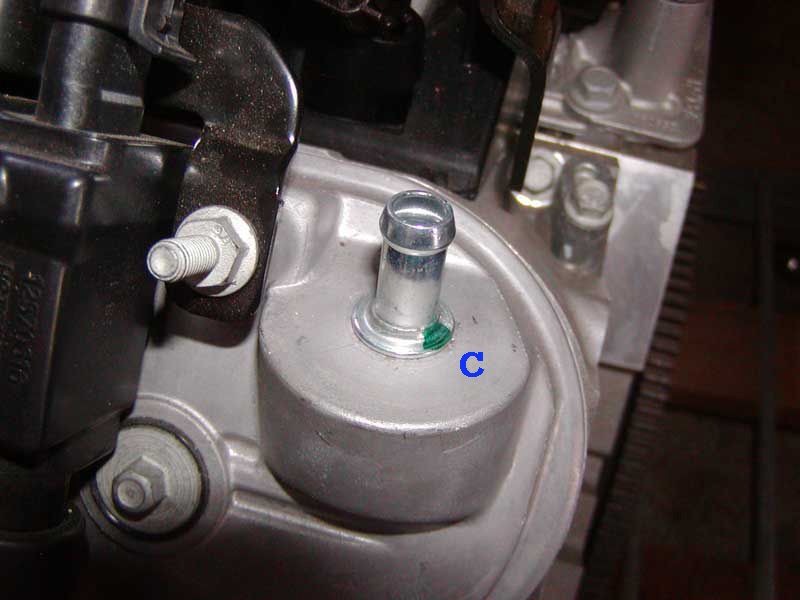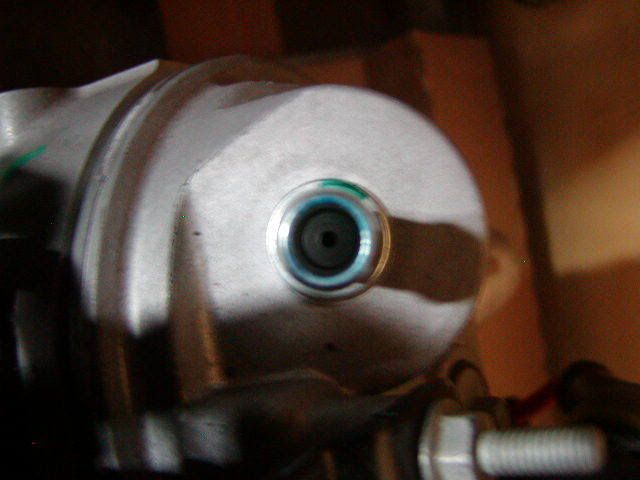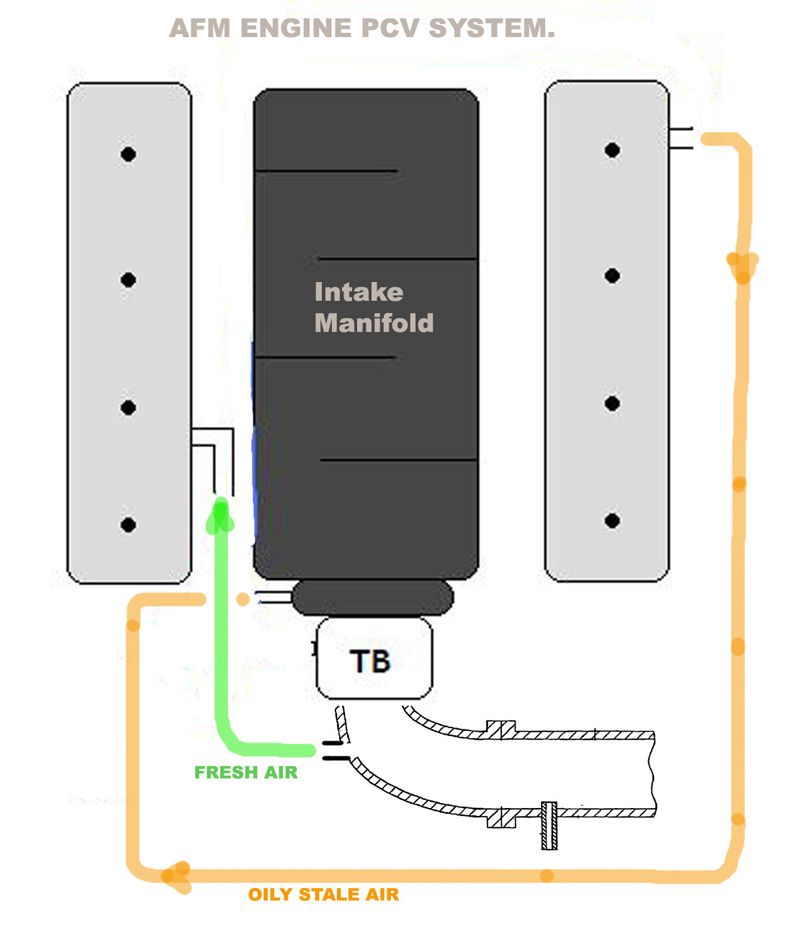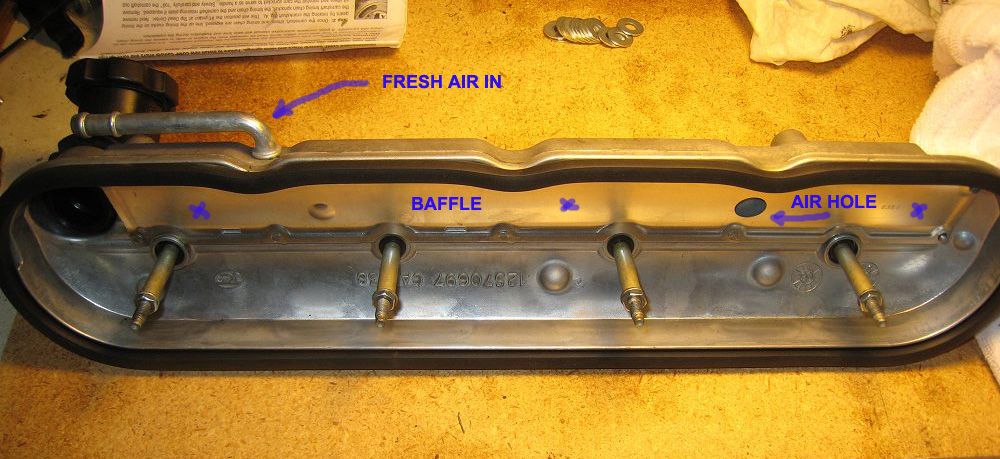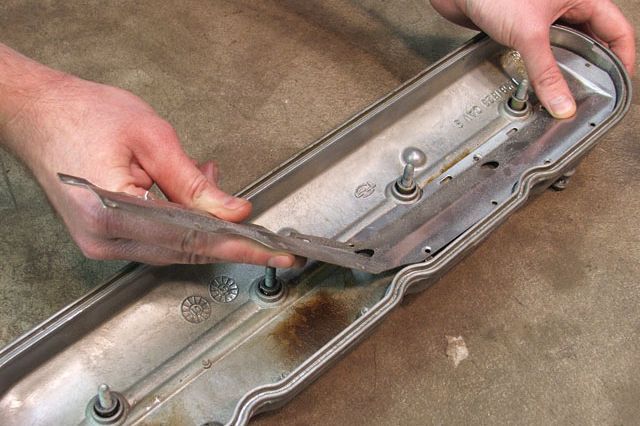I was about to go cruising with some buddies the other day, warmed the car up, and as soon as I pulled out of the driveway smoke starting pouring out of the exhaust. The smoke was whiter in color and not the standard blue from burning some oil. I pulled the car back in the garage, turned it off, and noticed oil starting to drip from the tailpipe.
The only internal mods to my engine are Yella Terra 1.85 rockers and associated springs and pushrods. The car also has Holley valve covers. A week prior to the event, I had noticed that the driver’s side PCV line was sucking in oil on startup. To verify this was the issue, I removed it and capped the ports. I left the passenger side intact. I had driven the car this way for a week with no more oil burning on startup.
The car showed no signs of running poorly prior to billowing smoke. It happened pretty much instantly. The car threw a couple codes when this happened. P0171 and P0174 for both cylinder banks running lean. This confused me since recent tuning logs say otherwise. I also got a code for an 02 sensor being bad, but can't remember the code number. I am somewhat skeptical that an bad O2 sensor would suddenly cause my issue.
To trouble shoot, I first wondered if the crankcase built up enough pressure to push oil past valve seals, so I returned the PCV system to stock. A quick drive around the neighborhood proved that wasn’t the issue. The car still pours out smoke; the more load on the engine, the more smoke. Also seems to smoke more when it is warmed up than when cold. During this short drive around the block, the car ran rough and even backfired a time or two.
Since then, I have removed all the spark plugs for inspection. All plugs were slightly wet with oil, my guess is because of the PCV line pulling oil into the intake manifold, which I verified by looking through the throttle body. The plug closest to the firewall on the driver’s side looked nasty. It was coated in a black, oily, sludge. I checked the oil, which was clean, but slightly low. I checked the coolant, which was a clear red, but not too low. No oil coolant mix was seen, nor were any plugs “steam cleaned” from coolant getting into the cylinders. The oil fill cap also did not have the milky sludge indicating coolant in the oil.
Next, I performed a compression check with all plugs out. I turned the engine over several times for each cylinder I was checking and got results reading from 155-195psi. The cylinder with the extremely dirty plug checked 160psi. I am not exactly sure why I had such variation, but no cylinders showed low compression. Theoretically, the compression should be 10.4x14.7psi = 153psi.
Right now I am leaning towards a bad valve guide seal. A bad seal won’t show up on a compression check since the valve will be closed when compression is built up right? I have not run a leak down test, but if compression is good, will a leak down test be necessary? I am assuming my compression check ruled out the head gaskets or piston rings (possibly a bad assumption). I would also be surprised that a piston ring would give out so suddenly.
Any other ideas? What other troubleshooting techniques can I try?
The only internal mods to my engine are Yella Terra 1.85 rockers and associated springs and pushrods. The car also has Holley valve covers. A week prior to the event, I had noticed that the driver’s side PCV line was sucking in oil on startup. To verify this was the issue, I removed it and capped the ports. I left the passenger side intact. I had driven the car this way for a week with no more oil burning on startup.
The car showed no signs of running poorly prior to billowing smoke. It happened pretty much instantly. The car threw a couple codes when this happened. P0171 and P0174 for both cylinder banks running lean. This confused me since recent tuning logs say otherwise. I also got a code for an 02 sensor being bad, but can't remember the code number. I am somewhat skeptical that an bad O2 sensor would suddenly cause my issue.
To trouble shoot, I first wondered if the crankcase built up enough pressure to push oil past valve seals, so I returned the PCV system to stock. A quick drive around the neighborhood proved that wasn’t the issue. The car still pours out smoke; the more load on the engine, the more smoke. Also seems to smoke more when it is warmed up than when cold. During this short drive around the block, the car ran rough and even backfired a time or two.
Since then, I have removed all the spark plugs for inspection. All plugs were slightly wet with oil, my guess is because of the PCV line pulling oil into the intake manifold, which I verified by looking through the throttle body. The plug closest to the firewall on the driver’s side looked nasty. It was coated in a black, oily, sludge. I checked the oil, which was clean, but slightly low. I checked the coolant, which was a clear red, but not too low. No oil coolant mix was seen, nor were any plugs “steam cleaned” from coolant getting into the cylinders. The oil fill cap also did not have the milky sludge indicating coolant in the oil.
Next, I performed a compression check with all plugs out. I turned the engine over several times for each cylinder I was checking and got results reading from 155-195psi. The cylinder with the extremely dirty plug checked 160psi. I am not exactly sure why I had such variation, but no cylinders showed low compression. Theoretically, the compression should be 10.4x14.7psi = 153psi.
Right now I am leaning towards a bad valve guide seal. A bad seal won’t show up on a compression check since the valve will be closed when compression is built up right? I have not run a leak down test, but if compression is good, will a leak down test be necessary? I am assuming my compression check ruled out the head gaskets or piston rings (possibly a bad assumption). I would also be surprised that a piston ring would give out so suddenly.
Any other ideas? What other troubleshooting techniques can I try?


